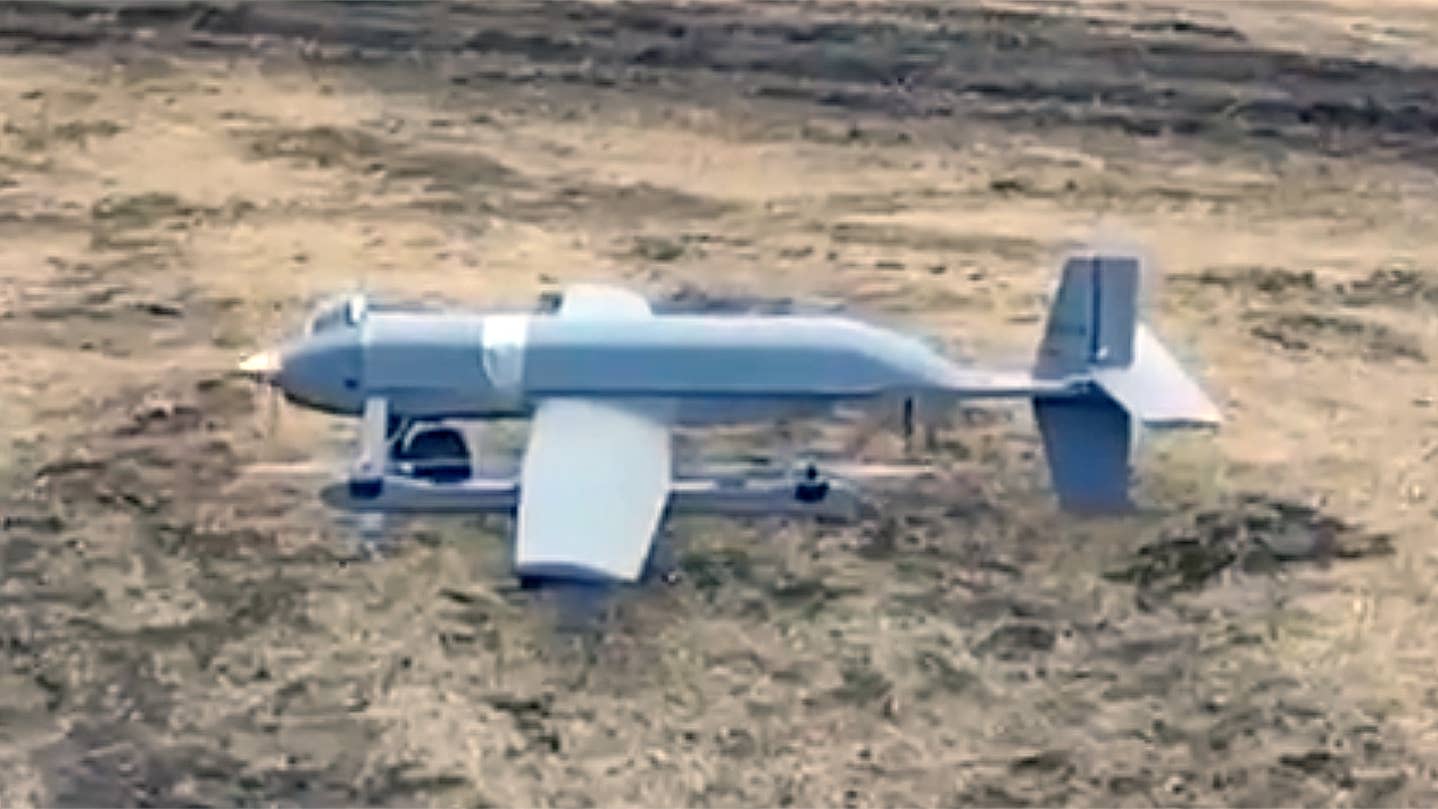FPV Drone Motherships That Also Relay Their Signals Offer Huge Advantages
Rumors that Russia is using such a system are circulating, but the concept could overcome major FPV drone deficiencies for both sides.

A new drone supposedly in use by Russian forces is claimed to act as a mothership, delivering First Person Video (FPV) drones well beyond their notoriously limited range, while also acting as an aerial data-link relay node needed to connect the FPV drones with their 'pilots' miles away. Regardless if the craft in question is actually capable of performing these tasks, the concept is highly relevant as a novel way to get around major technological limitations on the cheap, while resulting potentially in major battlefield impacts.
FPV drones have changed the nature of the war in Ukraine to such a degree that they are now being talked about as having nearly the same level of importance as artillery. Both sides are working to build hundreds of thousands of FPV (or more)drones this year in something of a low-end arms race. Following our previous deep dive into where this technology, aided by AI, is headed, just last week we further detailed the limitations that FPV drones have, principally in terms of range and the ability to hit their targets among ground clutter and electronic attacks. We also explored how automation is already helping to overcome some of those issues.
However, this Russian drone, or at least the concept rumored to be related to it, could be a very useful workaround for some of these and other FPV drone limitations. The U.S. military has been exploring broadly similar combinations in recent years, but outside the context of the rapidly evolving technological battlefield in Ukraine.
The Russian design, named Pchelka, which is a vertical takeoff and landing-capable, gas-powered craft, was supposedly filmed near the front in Eastern Ukraine. The ability to take off and land from anywhere is a big plus. The fact that it could potentially fly to the edge of its combat radius and release FPV drones, which can then take full advantage of their own maximum range (as much as a dozen miles, but operationally usually significantly less than that), is quite a capability leap on the cheap.
This delivery capability would not matter much if it also didn't have the ability to loiter at altitude and provide a direct line-of-sight relay connection between the parasite FPV drones it deploys and their controllers. While the infusion of artificial intelligence will truly unlock these systems' terrifying potential, a looming reality you can read all about in great detail here, providing a delivery system and data-link node in one package helps solve the most basic of limitations FPV drones have. These are their short range and their inability to maintain connections with their controllers over the range they can achieve, especially when low to the ground during their terminal attack runs.
We have talked in the past all about how airborne relays are already in use by both sides to limited degrees in order to maintain connectivity with lower-end drones that possess no beyond line-of-sight communications capabilities. By packaging that function with the delivery system, you get a more optimal relay solution as the launching drone can position itself closer to where the FPV drones are employed against their targets. This will allow them to stay better connected even while flying around ground clutter, in urban areas, and rising terrain. Beyond that, this would allow for FPV attacks to occur deep into enemy territory, potentially dozens of miles behind the front lines, where they are currently not expected to occur.
Still, the concept has drawbacks. It does not overcome the electronic warfare issues that are making FPV drone ops increasingly challenging. However, in some cases, it may decrease the chances of those countermeasures being present by attacking behind areas where FPV drones can commonly reach. The mothership drone would also be far more vulnerable to air defenses. It is much larger than the FPV drones it would carry and, acting as a relay, it would emit signals that can easily be detected and geolocated. If the relay is shot down, the FPV drones become useless. On the other hand, the mothership platform could also act in something of an overwatch role, spotting targets for FPV drones to prosecute while also providing relay connectivity.
Overall, these are not high-cost systems and would be considered attritable. The fact they could assist in multiple strikes in highly sensitive areas makes the cost of losing them in the process all that much more acceptable. The FPV drones they would carry are already expendable by design.
So, regardless of just how real Pchelka's rumored capabilities are, the concept certainly makes a lot of sense and we are bound to see similar iterations of it on the battlefield in Ukraine and beyond, especially until a far greater degree of autonomy becomes commonplace in lower-end drone systems like these.
Contact the author: tyler@twz.com


